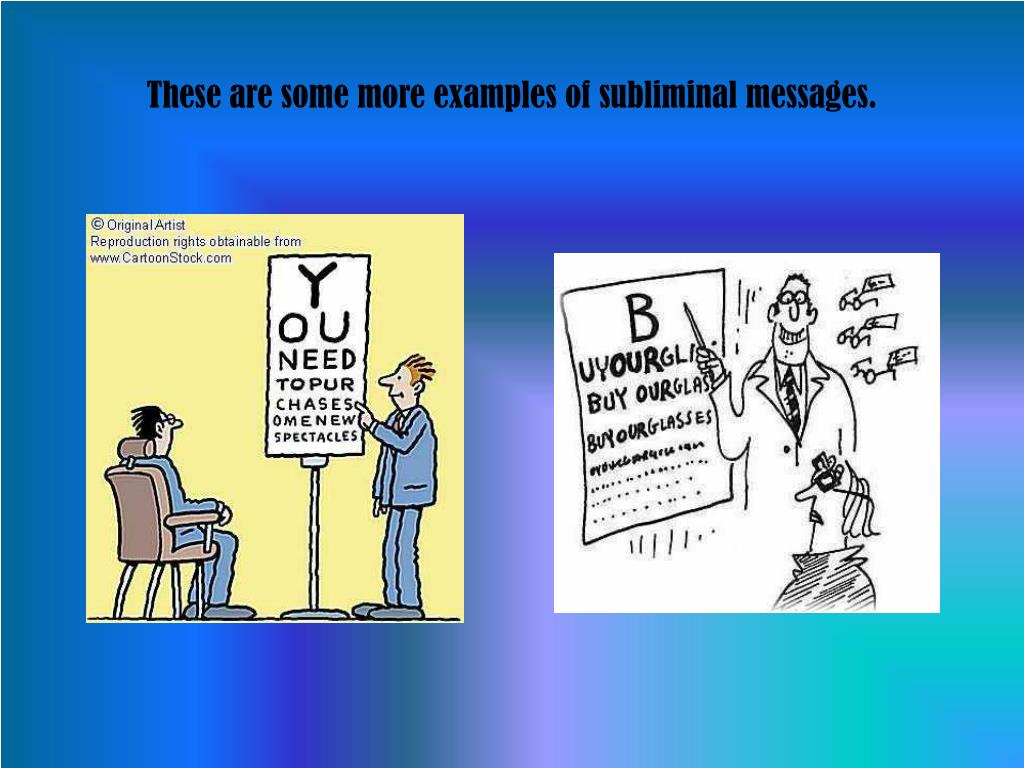


SUBLIMINAL MESSAGES PSYCHOLOGY HOW TO
The relation between perception and behavior or how to win a game of Trivial Pursuit. Among the more dramatic declarations are claims that: (1) subliminal auditory messages can induce. Subliminal priming studies are common these days not just to test subliminal messages themselves, but actually as a research tool in psychology. Dijksterhuis, A., & van Knippenberg, A. Claims persist that subliminal messages can have significant effects on motives and behavior.The power of the subliminal: Subliminal perception and possible applications. Dijksterhuis, A., Aarts, H., & Smith, P.There is no scientific reason to believe it can substantially change consumer behavior. However, although subliminal perception exists, research shows the effects to be minor and usually short-lived.

Subliminal messages are below the Absolute Threshold Level. Perhaps because of the media attention subliminal perception and persuasion sometimes receives, most of the American population does believe subliminal persuasion to have far reaching consequences. Subliminal messaging is based on psychodynamic theory, specifically the role of the conscious, subconscious, and unconscious mind. In 1957, James Vicary claimed that he increased the sale of cola and popcorn in a New Jersey cinema by subliminally flashing “Drink Coke” and “Eat popcorn” during movies. Subliminal perception is controversial mainly because of the notion of subliminal persuasion: The strategy that may be used by marketers or politicians to deliberately influence customers or voters subliminally. This is shown in research on the subliminal perception of short positive (e.g., sun) and negative (e.g., death) words. A subliminal message is an affirmation or message of sensory stimuli that is presented below (sub) the normal limits of perception (2). Perceivers can to some extent infer the valence (is something good or bad?) from subliminal stimuli. Effects of mere exposure have even been obtained for stimuli that were perceived for only one millisecond. However, a few findings are reasonably well established, the most prominent being subliminal mere exposure Repeated subliminal exposure to a stimulus (for example a picture) leads perceivers to like this picture a little more. The threshold is merely subjective.Įffects of subliminal perception are generally small and not easy to establish in controlled laboratory research. The word is used by psychologists to refer. Whether a briefly presented stimulus reaches conscious awareness depends on many different factors, including individual differences. A subliminal stimulus is, by denition, below the sensory threshold, and therefore cannot be perceived at all. No objective threshold exists for conscious perception. About how they could affect our behaviors and decisions is still a widely researched issue, and although the opinions of the psychologists are very different about it, the popular beliefs establish a cause-effect linear relationship between the emission of the. The idea of an objective “threshold’ is misleading. Subliminal messages are processed in the brain but they fail to reach conscience. In this experiment, the participants consisted of 137 volunteers from psychology classes at Texas Christian University.


 0 kommentar(er)
0 kommentar(er)
